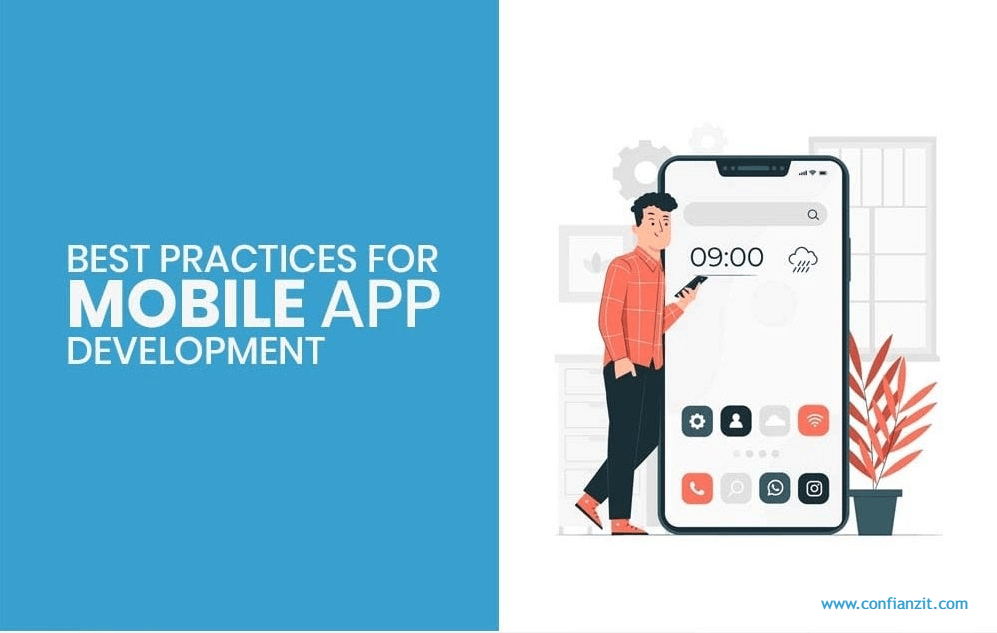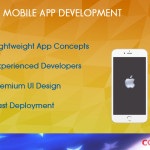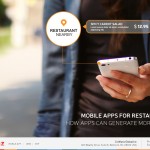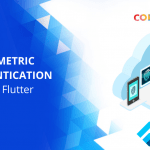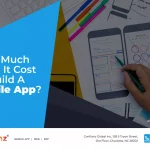So, you’ve got this app idea. It’s brilliant and innovative, and it will blow everyone away. All you have to do is make it.
Except…
The Apple App Store alone has 1.8 million apps on it. The Google play store has almost 3 million. Even after purges of lower-quality apps, those numbers have only gone up. So if you want to stand out in the sea of competitors, you have to bring your A-game.
But don’t panic! Despite the supply, new and useful apps are still in huge demand. All you have to do is follow these best practices to set you and your new app up for success.
Beginning Stages of App Development
Once you have an idea for an app, you’re probably chomping at the bit and want to choose a mobile app development company and start production as soon as possible. But if you take the time to plan before you dive into app development, you can save yourself a lot of time and energy later.
Figure out your budget
Budgetary restrictions are going to be the number one limitation for your project. Your budget will determine your timeline, the features you can include in your application, and the complexity of your UI.
Use our mobile app cost calculator to determine what you will be able to make with the budget you have.
Choose your platform
If you’re developing a native app, you must choose between Android and iOS. Technically, you could develop two native apps simultaneously, but it’s best to focus on just one unless you’re doing cross-platform.
There are many factors to consider when choosing between the two OSs.
- Which programming language do you want to use? Some languages are cross-platform, while others work specifically for Android or Apple.
- What’s your target market? IPhones are more prevalent in America, while Androids dominate the market nearly everywhere else.
- What do you want to prioritize? Which is more critical: Android’s flexibility or Apple’s higher security?
Research app store development guidelines
Once you’ve decided on a platform, you need to research its rules for releasing an app. These rules may seem unimportant, just something you read right before release, but you’d be sadly mistaken!
Currently, the instructions detailing the Apple App store guidelines are over 13,000 words long, covering everything from beta testing to data collection. The Google Play one is just as in-depth.
Review that information and integrate it into every step of your development process. Otherwise, you may have to make costly changes at the 0 hour or even have your app taken down.
Research your competition
In an ideal world, your app would be alone in fulfilling the needs of your target market. However, we all know that’s not the case. So, instead of dwelling on the fact that there are already apps for your target audience, figure out how your app can be better than the competition.
Implement some SEO practices and do keyword research to determine what apps appear when you search for phrases related to your app. Then download as many of these apps as you can and explore them. Note the good and the bad. Finally, isolate what these apps aren’t doing well so you can outperform them.
Figure out the core of your app
Before you begin development, the last thing to do is choose your app’s core elements. You probably came up with a notebook full of exciting concepts when brainstorming. Now, it’s time to kill your darlings (or, at least, table them until a later update) and pick only the essential features.
Forge your app’s identity now, knowing you can always add the bells and whistles later.
App Development Phase
Once you’re in the development phase, getting overwhelmed with everything you need to do is easy. Break down tasks and work with your team to stay organized and on task. These are rules to keep in mind during development.
Keep design in mind
Often in the programming phase, design gets pushed to the side. This is a mistake, though, because your app’s design is what attracts customers and keeps them engaged. You can have the most useful app of all time, but if it looks like garbage or is hard to navigate, people will never give it a chance.
Keep these end goals in mind to help you program accordingly:
- Easy navigation: The navigation system should be low profile and not take up too much space visually. But make sure users can access your app’s features without hunting. Finally, reduce the number of pages by prioritizing what’s most important.
- Accessible: You want your app to be usable by the broadest demographic possible. Make your font legible and scalable for those with visual impairments. Use contrasting colors so the text sticks out!
- Dynamic: Whenever possible, use images instead of text. Animations are even better since they are attention-grabbing. In addition, every input should have a resulting visual change; even if things are slow to load, users will know the app isn’t frozen.
Focus on user experience (UX)
Every choice you make should center around your user and their experience. Remember, you are battling for their attention against their other apps and all the alternatives at the app store.
Speed is essential. Users expect apps to load almost instantly, and delays and freezing will put your app on the chopping block. It only takes a moment to delete an app, so make sure your app is lean enough to beat that time.
Get feedback early and often
As soon as you have an MVP, get feedback. Implementing a frequent feedback loop will help you find bugs and uncover processes that are not user-friendly.
You can get feedback from your team, friends, and family during the early stages. Later in the process, you should use beta testing or early access to hear more from your target audience so you can make adjustments to ensure your app is truly designed for them. Having fresh eyes on the project at every stage is helpful.
Prioritize security
Creating an app that protects your user’s data should always be a top priority! Data breaches can kill your app in the water, and even if you manage to stay afloat, you will have to do a lot of damage control on every side.
Users should always be able to find your policies and what you’re doing to keep them protected. Update your security consistently to keep up.
Ready to Build an App? Let’s Talk
The beginning of developing an app is exhilarating. But the process can be a massive headache if you don’t do things right.
Hire a dedicated Android App Developer / iOS App Developer at affordable cost from Confianz Global®.
Are you thinking about building a mobile app? We want to hear all about it! Contact us to book a free consultation to learn about our mobile app development services. We’re available to help build your mobile app, whether you want it made for Android, iOS, or both. If you are interested in building a custom Android mobile application or iOS mobile app for your business, please contact us!
